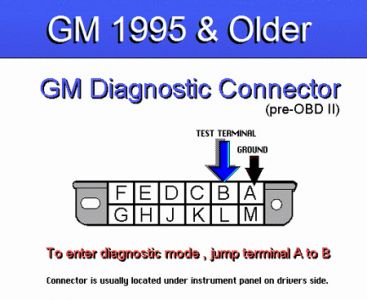Tho you may have cleaned the EGR, It may not be funtioning correctly, if it sticks open at the wrong time, it will kill the engine, and make it near impossible to start, Is the service engine soon light on?
HARD START
Symptom Definition
Engine cranks okay, but does not start for a long time. Engine eventually starts, and may die immediately or run okay.
Possible Cause & Correction
Check the following items:
� � � Check fuel pump relay by connecting test light between fuel pump test terminal (terminal "G" of ALDL on most vehicles) and ground. Turn ignition on. Light should illuminate for 2 seconds. If light does not illuminate for 2 seconds, see FUEL PUMP RELAY under FUEL SYSTEM in I - SYS/COMP TESTS article in this section. For location of fuel pump test connector, see COMPONENT LOCATIONS in I - SYS/COMP TESTS article in this section. Check for blown injector fuse.
� � � Check for poor quality or water contaminated fuel.
� � � Ensure TP sensor is not sticking or binding.
� � � Check EGR operation.
� � � Check for a leaking injector. To do this on TBI systems, disconnect injector electrical connector at injector. Crank engine and watch for fuel leakage.
� � � Ensure resistance of coolant sensor circuit or coolant sensor is not too high. See CODE 15 chart in appropriate TESTS W/CODES article in this section or see SENSOR RANGE CHARTS article in this section.
� � � Check ignition system for a worn distributor shaft, bare or shorted wires, incorrect pick-up coil resistance, loose ignition coil ground or moisture in distributor cap. Check for adequate spark using Spark Tester (ST-125).
� � � Check for shorts by spraying plug wires with a fine mist of water.
� � � Remove spark plugs and check for wet plugs, cracks, improper gap, burned electrodes or heavy carbon deposits.
� � � Check for correct fuel pressure in all speed ranges.
� � � Check for faulty in-tank fuel pump check valve (PFI only). A faulty in-tank fuel pump check valve will allow fuel in lines to drain back to tank after engine is stopped. To check this condition, turn ignition off, disconnect fuel pressure line at fuel rail and remove filler cap. Connect a radiator test pump and apply 15 psi (1.0 kg/cm2 ) pressure. If pressure will hold for 60 seconds, check valve is okay.
� � � Ensure the installed PROM/MEM-CAL application is correct for that particular vehicle. Check with dealer for latest application information.
� � � Check for restricted exhaust system.
� � � Check Idle Air Control (IAC) system. Check for foreign material in IAC bore. See DIAGNOSTIC AIDS in CODE 35 chart in appropriate TESTS W/CODES article in this section.
� � � Check MAP or MAF sensor. Check for flooding.
� � � Inspect crankshaft sensor clearance and resistance. Check harmonic balancer interrupter rings for bent or missing vanes. EXCESSIVE EXHAUST EMISSIONS OR ODORS
Symptom Definition
Vehicle fails emission test. Vehicle may also have excessive "rotten egg" smell (hydrogen sulfide) being emitted from tail pipe. Excessive odors DO NOT necessarily indicate exhaust emissions are high.
Possible Cause & Correction
Check the following items:
� � � Check for lead contamination of catalytic converter. Look for removal/tampering at restrictor in fuel filler neck.
� � � Check coolant level. Check cooling system thermostat for proper operation and application.
� � � Check cooling fan for proper operation.
� � � Ensure air is not diverted to exhaust manifold, but is diverted to catalytic converter (TWC/OC) or atmosphere during normal (warm) engine operation.
� � � If emission test shows excessive carbon monoxide (CO) and hydrocarbons (HC) emissions, and vehicle is also emitting excessive odor, check all systems and components that could cause engine to run rich. See DIAGNOSTIC AIDS in CODE 45 chart in appropriate TESTS W/CODES article in the ENGINE PERFORMANCE Section. Check EGR system.
� � � Ensure PROM/MEM-CAL in vehicle is correct for that particular vehicle. Check with manufacturer for latest application information.
� � � If emission test shows excessive oxides of nitrogen (NOx) emissions, check all systems and components that could cause engine to run lean or to run too hot. See DIAGNOSTIC AIDS in CODE 44 chart in appropriate TESTS W/CODES article in this section.
� � � Ensure fuel filler cap is properly installed.
� � � Check for plugged or stuck PCV valve. Check for fuel in crankcase.
� � � Check for vacuum leaks.
� � � Check for excessive carbon build-up. Remove with top engine cleaner.
� � � Check for use of excessive fuel additives.
Friday, October 3rd, 2008 AT 2:53 PM





